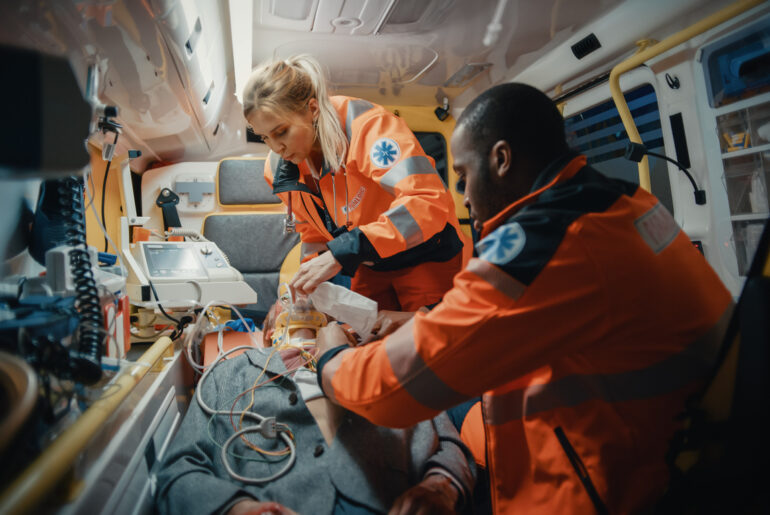Emergency medical technicians (EMTs) and paramedics devote their careers to preserving public safety and saving the lives of people in their communities. While both positions play a vital role, there are differences between them with regard to their required levels of education, training, and job responsibilities.
What EMTs and Paramedics do
EMTs provide patient care in the event of a medical or traumatic emergency. EMTs are on the front lines and the first on the scene of an emergency to assess the cause and severity of a patient’s injuries. If the emergency is severe, EMTs transport a patient to a hospital, monitor their condition, and administer medical care until arrival.
Like EMTs, paramedics also respond to the scene of an emergency medical event. As licensed healthcare professionals, paramedics can provide advanced life support to patients prior to reaching a hospital. Paramedics receive more advanced training than EMTs in treating acute illnesses and injuries.
Job duties
EMTs and paramedics share similar job duties in that they both assess patients, stabilize and treat them, and transport them to a hospital, if necessary. Paramedics are equipped to provide more extensive care than EMTs. With comprehensive knowledge in cardiology, physiology, and medical procedures, paramedics can perform a tracheotomy, give medications intravenously, interpret electrocardiograms (EKGs), and utilize advanced medical equipment when necessary.
Educational and training specs
A college degree isn’t required for either EMTs or paramedics, although candidates will need a high school diploma or GED. Both need to be CPR-certified and complete an EMT training program, which is offered by technical institutes, community colleges, or vocational schools. EMT-level programs can usually be completed in 150 hours and cover training on how to evaluate patients’ conditions, manage trauma and cardiac emergencies, clear obstructed airways, use field equipment, and handle emergencies.
Paramedics must complete basic and advanced EMT training, which typically takes 400 hours to complete. During advanced EMT training, candidates learn complex airway devices, intravenous fluids, and some medications. Prospective paramedics often work as EMTs for one to two years to gain on-the-job experience as candidates are required to earn 1,200 to 1,800 hours of training.
Certification, licensure, and testing requirements
Both EMTs and paramedics need to be at least 18 years old and have a high school diploma, a valid driver’s license, and CPR certification.
EMTs and paramedics are required to become certified by the state where they will work. Most states use the certification test administered by the National Registry Emergency Medical Technicians (NREMT), although a few states have their own certification exam.
Passing the NREMT certification exam demonstrates minimal competency and is the next step to becoming an EMT or paramedic.
Peterson’s offers EMT and paramedic test prep that features several full-length practice tests (including a diagnostic test to help you discover your strengths and weaknesses), flashcards to help test your knowledge of medical terminology, and study guides.
Once certified, you will need to obtain a license from your state. Some states authorize licensure on the basis of NREMT as proof, while others provide their own tests for license. Check with your state for specific requirements.
RELATED: Prepare for a Career as an Emergency Medical Technician (EMT)
Check out Peterson’s test prep to help you achieve your best score on the NREMT certification exam—and get one step closer to your career as an EMT or paramedic.



